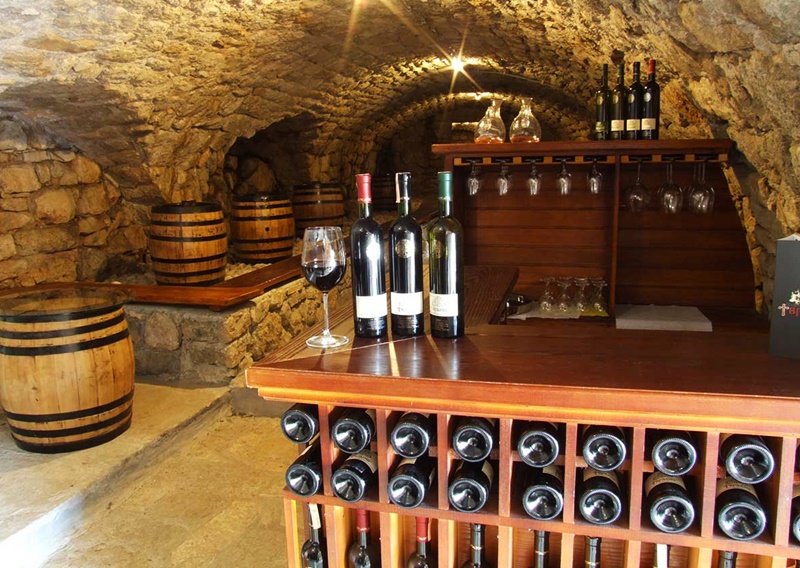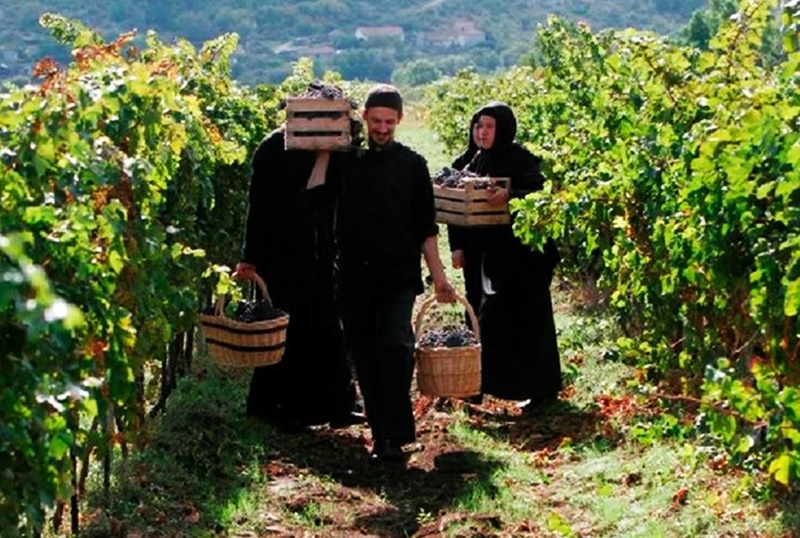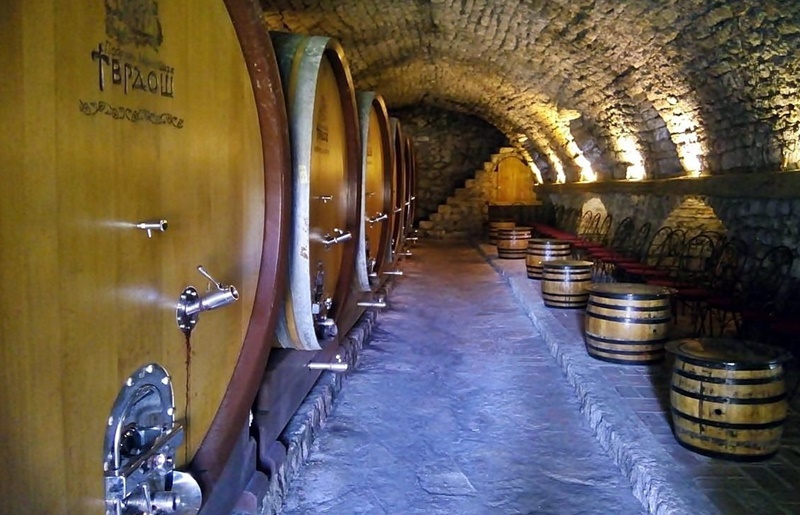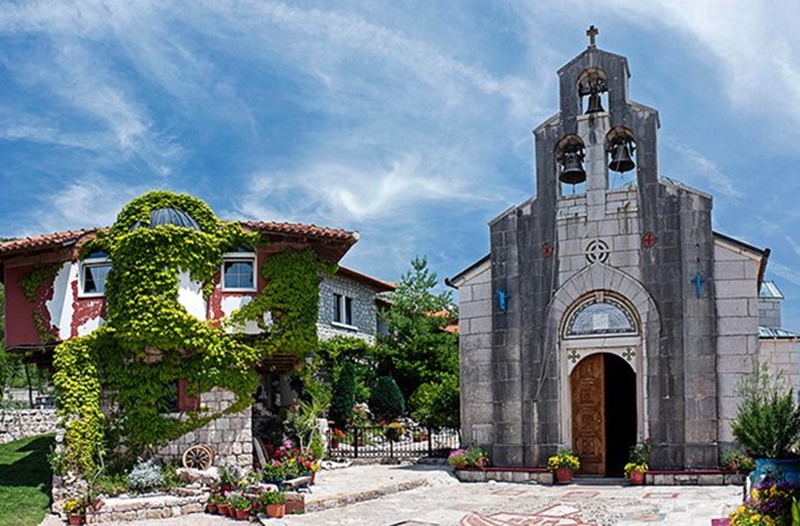Monastery Tvrdos
Wine tour to Bosnia Herzegovina.
Tailor made, by plane, helicopter or private car.
For people who love nature, spirituality, good wine, delicious food. The Tvrdoš Monastery is a must-visit even if you aren’t a fan of the finest drink, but wine lovers have extra reason to make the 8 km trip outside of Trebinje.
Departure in the morning from your town.
Tour of the monastery, wine testing, snack (cheese, prosciutto, bosnian donuts – uštipci)
A monastery dedicated to the Dormition of the Mother of God, with a long tradition of winemaking. The Serbian Orthodox Monastery Tvrdoš is located in southeastern Herzegovina.
Although the monastery was rebuilt in 1924, it kept its original stone cellar from the 16th century. The old cellar is underneath the monastery where the best Vranac wines age in big 100 year old Monastic oak barrels.
Please note, women must wear a long sleeve jacket and men shouldn’t wear short when visiting the monastery. You can take used clothes to cover knees or shoulder at the entrance to the monastery. There is also a shop with souvenirs.
An old epic folk poem mentions the monastery Tvrdoš and “its monastic cellars filled with wine”, a proof that the monastery was already well known for its winemaking in the Middle Ages. The Herzegovinian karst soil is shallow, mixed with white crushed stones. These warm and dry conditions are particularly well suited to the native grape varieties Žilavka and Vranac, which thrive in the region.
The origin of Žilavka remains unclear but could be related to white varieties planted by the ancient Greeks along the Mediterranean coasts. The name may refer to the thin fibers visible on the mature grapes “zilav” means “tough” in slavic languages). It could also be related to the grape’s character and endurance as well as adaptability to scorched rocky soils, producing wines with a remarkable balance of freshness and fullness of flavor.
Vranac was introduced to South Herzegovina during the Austro Hungarian Empire. The name “Vranac”, which means “black horse”, highlights the grape’s dark color as well as its strength and power. When grown on the rocky grounds of Tvrdoš created by a washout of the soil from the surrounding hills, Vranac shows distinctive acids and intense fruity aromas.
“Trebinje is like Tripolis, Greece,” said Leader Kostoula Kapogiannis. “They are warm, hospitable and enjoy going for walks in the cities and having coffee.
Our next destination is Trebinje town. Trebinje attracts visitors with its rich cultural heritage, cuisine, and it is known for its cultural and historical heritage, hospitableness, and its rich and diverse gastronomy. The most charming part of Trebinje is its old town, called “Kastel”, dating back to the Ottoman era and built on banks of the Trebisnjica River. A walk through the Old Town Kastel will take you back in time.
Small charming streets, cozy cafés, traditional architecture and huge building of former Austro-Hungarian barracks, today’s Museum of Herzegovina, if you are history and art lover.
Must-see of Trebinje, situated a bit away from the town center, is the Herzegovinian Gracanica. It’s a monastery sitting on top of the hill overlooking the whole Trebinje and the valley surrounding it.
Trebinje cuisine is based solely on domestic products. Its autochthonous wines, cheese, honey, dried fruit are delicacies.
The local market, which opens every day on this very square at 07.00 in the morning brings people from nearby villages who offer local specialties such as herbs, cheese, honey, fruits, vegetables…
Lunch in one of beautiful restaurant in Trebinje. They serve traditional meals and that is why this may be the perfect choice if you are into tasting some local specialties Lunch is possible also on a small boat.
Enjoy Bosnia and Herzegovina.








